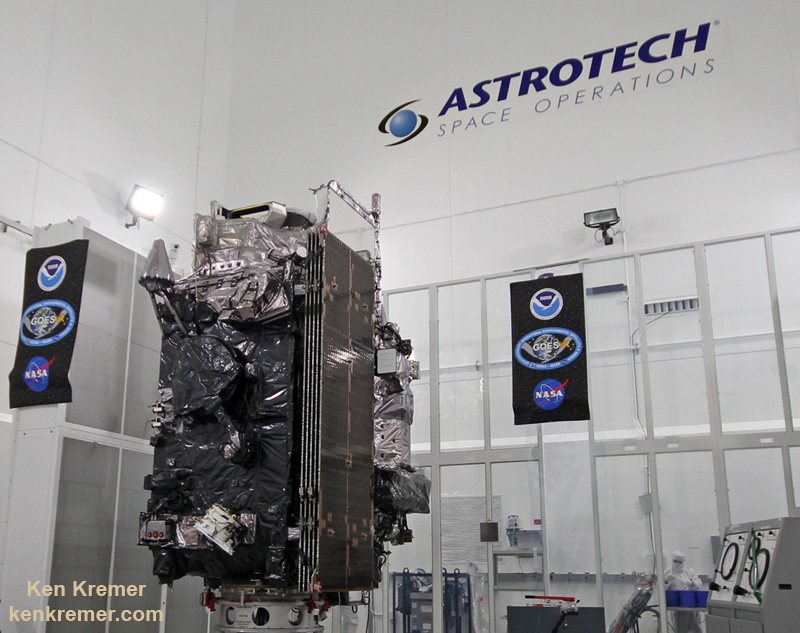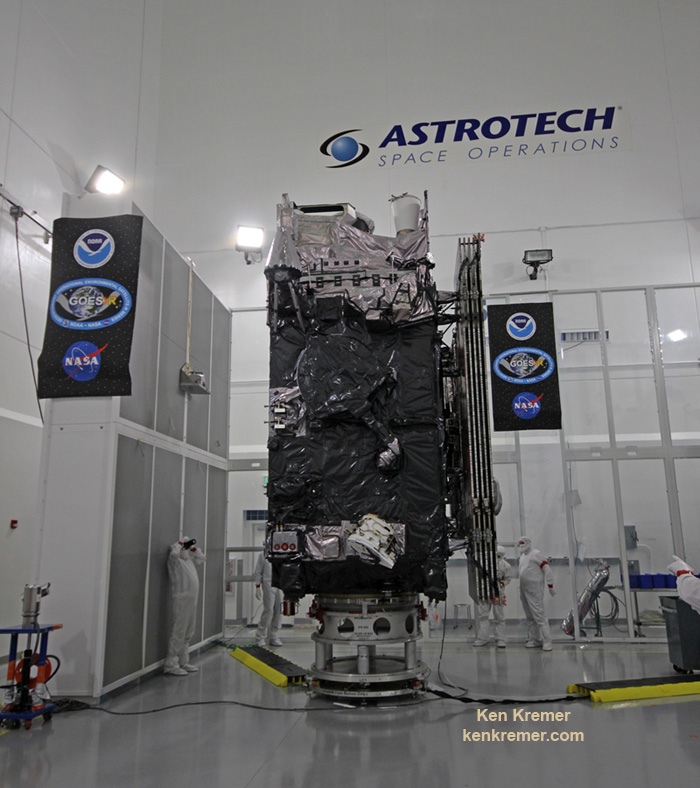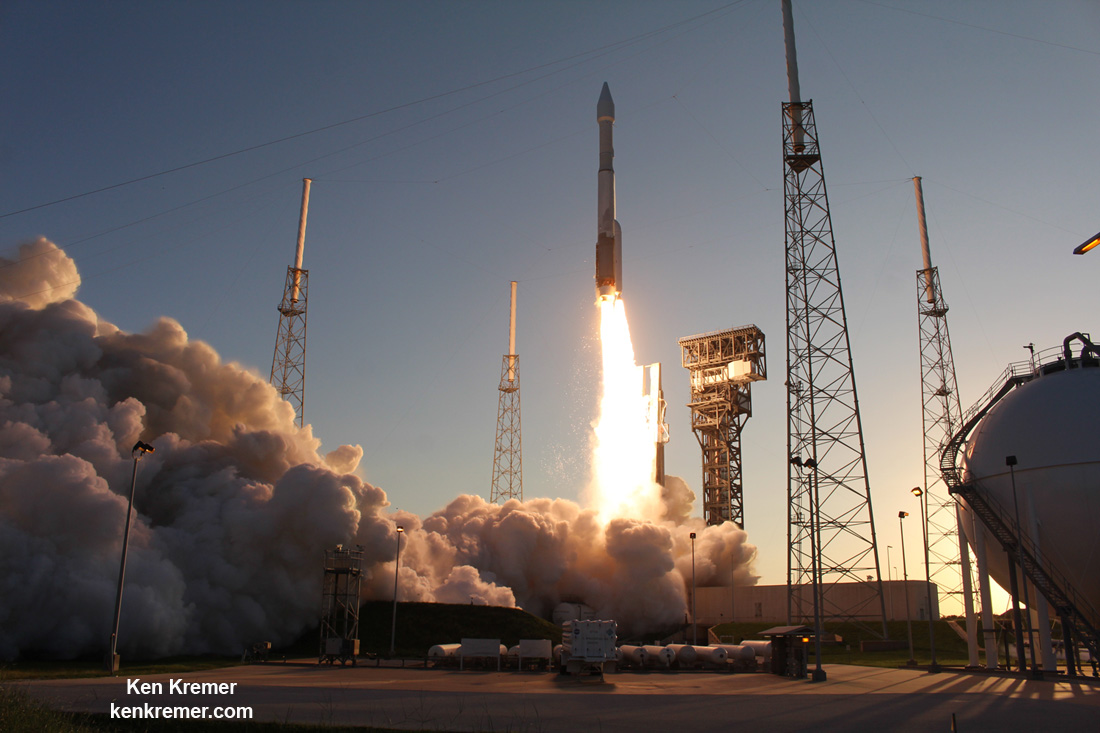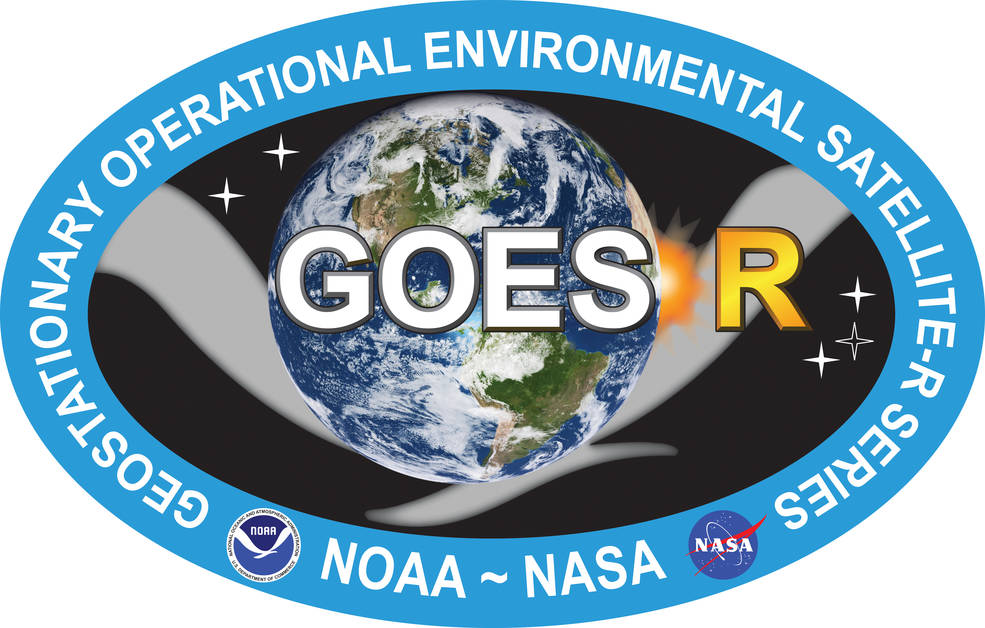Launch of GOES-R Transformational Weather Satellite Likely Delayed by Hurricane Matthew

The NASA/NOAA GOES-R (Geostationary Operational Environmental Satellite – R Series) being processed at Astrotech Space Operations, in Titusville, FL, in advance of the planned launch on a ULA Atlas V likely delayed from Nov 4, 2016 by Hurricane Matthew. GOES-R will be America’s most advanced weather satellite. Credit: Ken Kremer/kenkremer.com
Next month’s launch of GOES-R – a new and advanced transformational weather satellite that will vastly enhance the quality, speed and accuracy of weather forecasting – will likely be delayed a few days due to lingering storm related effects of deadly Hurricane Matthew on launch preparations at Cape Canaveral Air Force Station and the Kennedy Space Center (KSC), Universe Today confirmed with launch provider United Launch Alliance (ULA).
“The GOES-R launch will likely be delayed due to Hurricane Matthew,” ULA spokeswoman Lyn Chassagne told Universe Today.
Liftoff of the NASA/NOAA GOES-R (Geostationary Operational Environmental Satellite – R Series) weather satellite atop a United Launch Alliance (ULA) Atlas V rocket had been scheduled for Nov. 4 from Space Launch Complex 41 (SLC-41) on Cape Canaveral Air Force Station.
GOES-R is the first in a new series of American’s newest, most powerful and most advanced weather observation satellites.
It’s ironic that awful weather is impacting the launch of this critical weather satellite.
It’s not known how long any postponement would be – perhaps only a few days since preliminary indications are that the base suffered only minor damage and there are no reports of major damage.
“Our teams are still doing a damage assessment. So we don’t have a status about all of our infrastructure yet,” Chassagne told me.
“A preliminary assessment shows that we have some minor damage to a few of our facilities. We had no rockets on the pads. So there is no damage to hardware.”
Damage assessment teams are evaluating the launch pad and launch facilities in detail right now.
“Since we still have emergency response teams in assessing, we don’t know how long the delay will be until we get those assessments.”

The NASA/NOAA GOES-R (Geostationary Operational Environmental Satellite – R Series) being processed at Astrotech Space Operations, in Titusville, FL, in advance of the planned launch on a ULA Atlas V likely delayed from Nov 4, 2016 by Hurricane Matthew. GOES-R will be America’s most advanced weather satellite. Credit: Ken Kremer/kenkremer.com
The looming threat of a direct hit on Cape Canaveral and KSC from the Category 4 storm Hurricane Matthew on Friday, Oct. 7, forced the closure of both facilities before the storm hit. They remained closed this weekend except to emergency personal.
The base closures therefore also forced a halt to launch preparations at the Cape and pad 41.
The storm grazed by the Kennedy Space Center (KSC), Cape Canaveral Air Force Station (CCAFS) and the major population centers along the Florida Space Coast with wind gusts up to 107 mph – rather than making a direct impact as feared.
“Hurricane Matthew passed Cape Canaveral and Kennedy Space Center …. with sustained winds of 90 mph with gusts to 107 mph,” on Friday, NASA officials reported.
The storm passed “the space center about 26 miles off the tip of Cape Canaveral.”
The launch ULA facilities are now being thoroughly inspected before any launch preparation can proceed.
The satellite is in the final stages of preparation at the Astrotech Space Operations Facility in Titusville, FL as I recently observed during an up close visit in the High Bay cleanroom.
Lockheed Martin is the prime contractor for GOES-R.

United Launch Alliance Atlas V rocket lifts off from Space Launch Complex 41 at Cape Canaveral Air Force Station carrying NASA’s Origins, Spectral Interpretation, Resource Identification, Security-Regolith Explorer, or OSIRIS-REx spacecraft on the first U.S. mission to sample an asteroid on September 8, 2016. GOES-R launch on an Atlas V planned for Nov. 4 is likely delayed due to Hurricane Matthew. Credit: Ken Kremer/kenkremer.com
Stay tuned here for Ken’s continuing Earth and Planetary science and human spaceflight news.
The post Launch of GOES-R Transformational Weather Satellite Likely Delayed by Hurricane Matthew appeared first on Universe Today.

